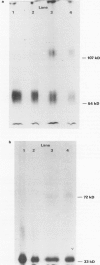Abstract
The high molecular weight form of the plasminogen activator urokinase (54 kD) binds to specific receptor sites on the cell membrane of breast carcinomas by its inactive "A" chain. The binding is of high affinity (range of dissociation constants: 5.6 X 10(-11) to 4 X 10(-10) mol l-1 and there were between 20 to 250 fmol of binding sites per milligram of membrane protein) and equilibrium is reached in 60 min. No competition for binding sites was observed with epidermal growth factor, tissue plasminogen activator or the low molecular weight form of urokinase (33 kD). Cross-linking experiments suggest that the receptor is a monomeric unit of molecular weight of 50 kD. This binding site provides a mechanism for the incorporation of urokinase into the cell membrane.
Full text
PDF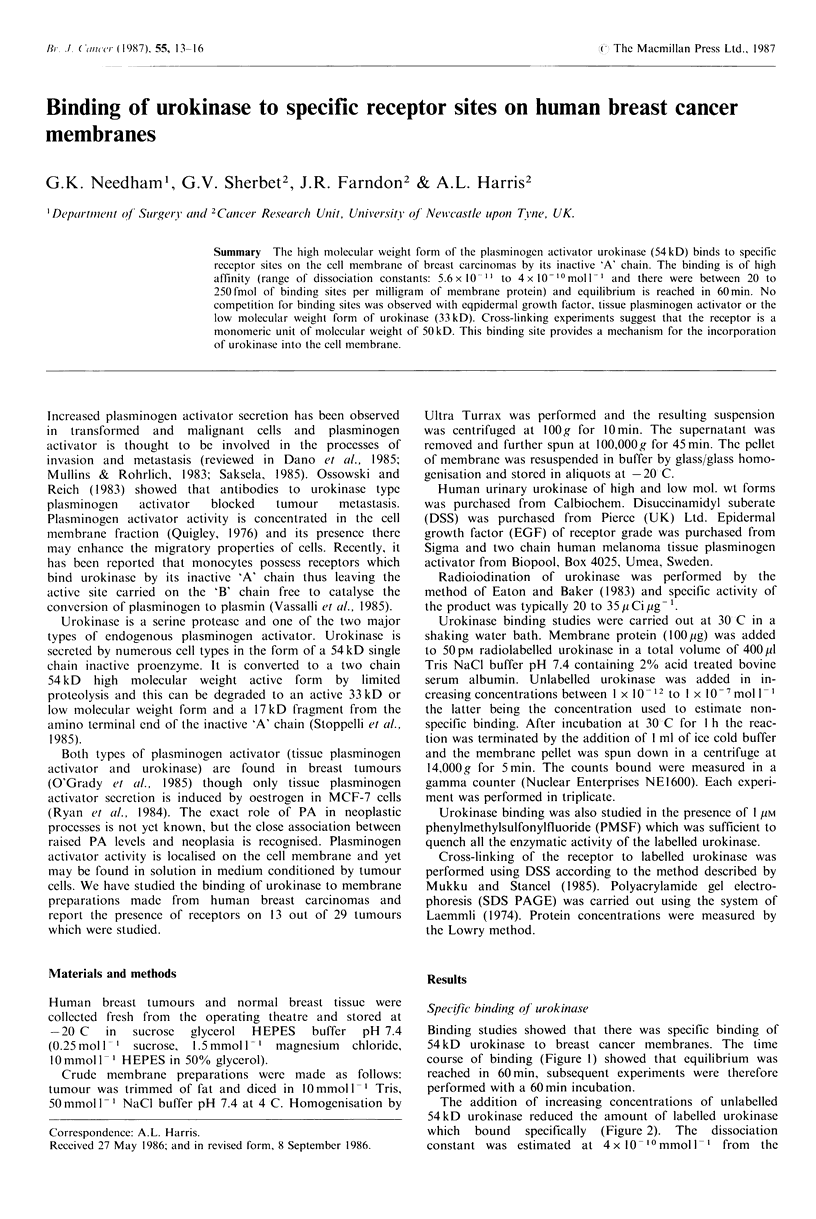
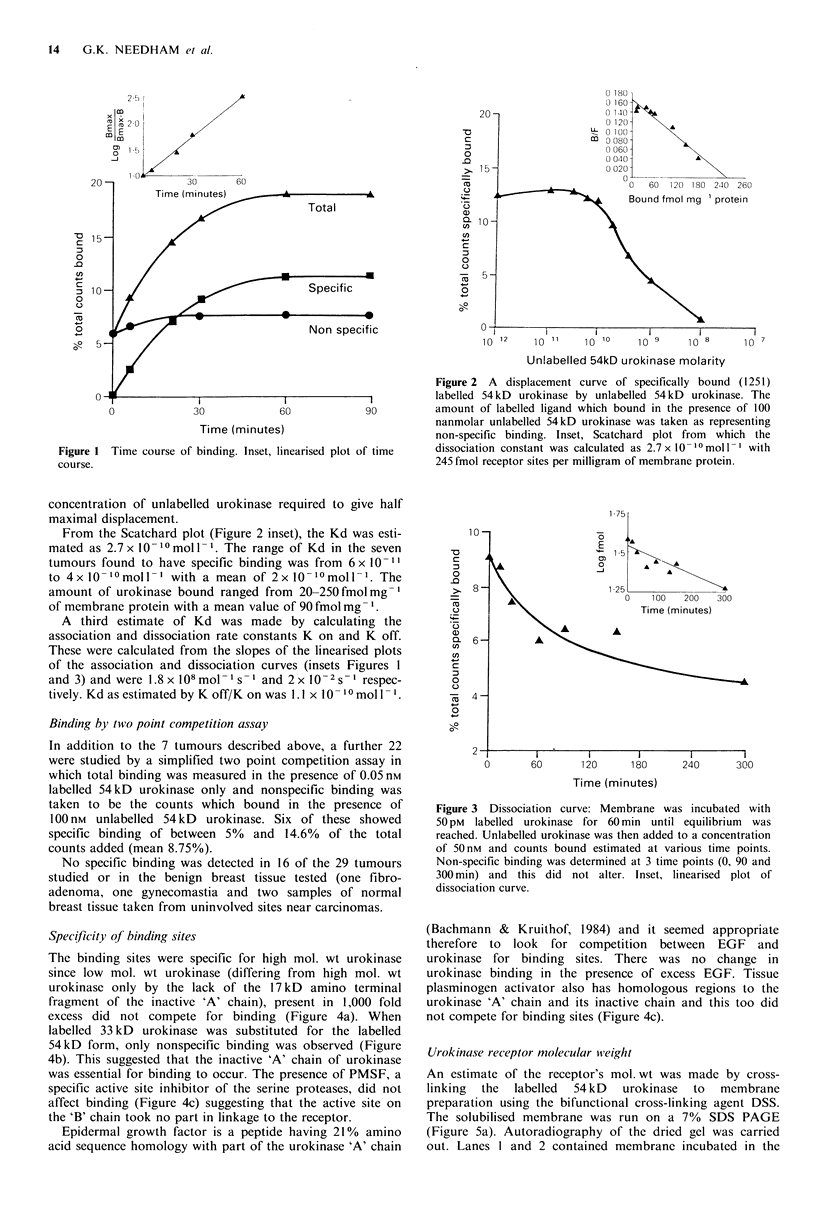
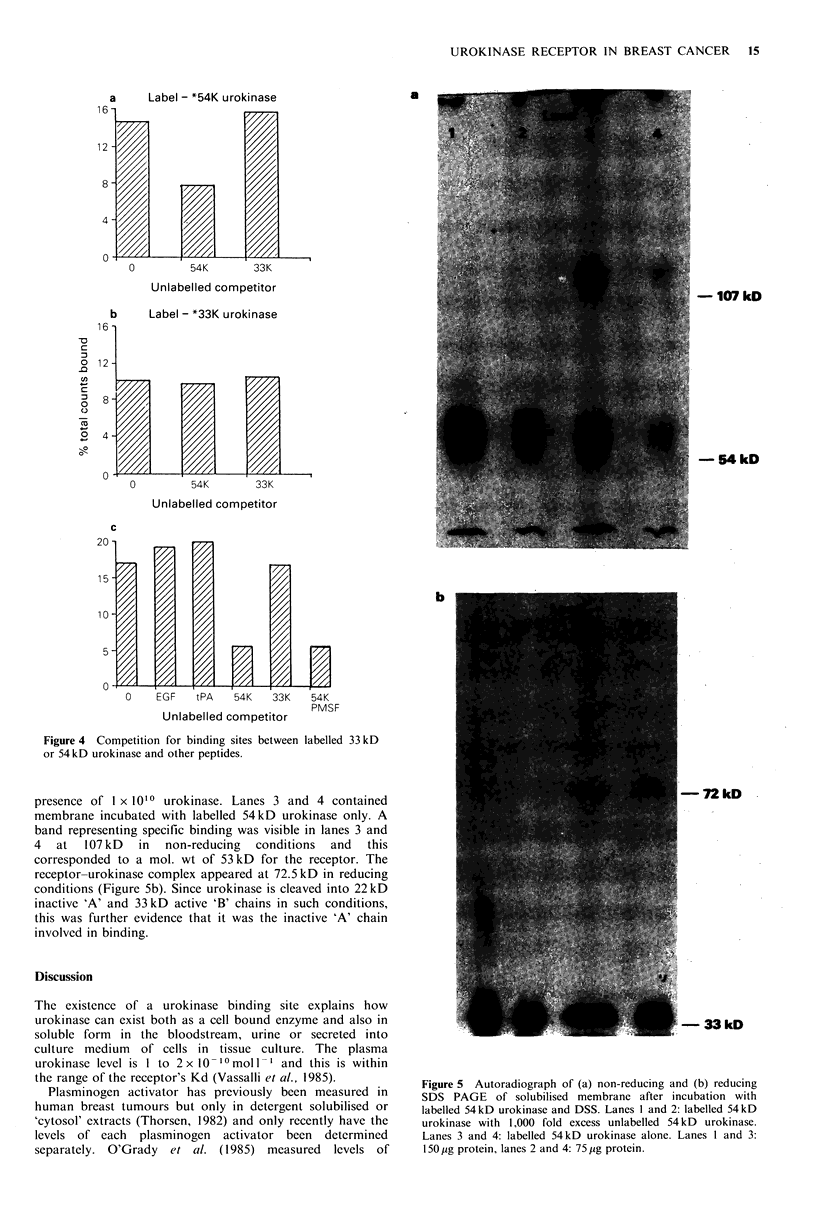
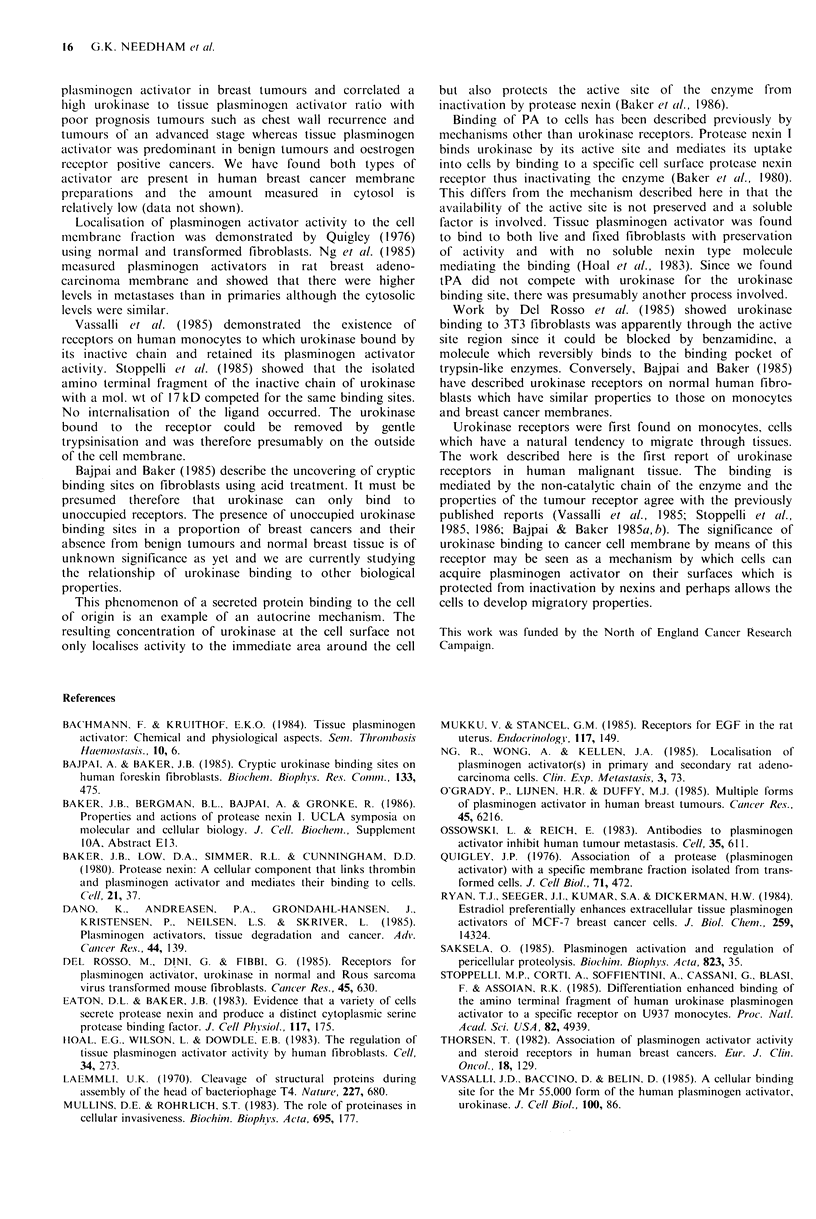
Images in this article
Selected References
These references are in PubMed. This may not be the complete list of references from this article.
- Bachmann F., Kruithof I. E. Tissue plasminogen activator: chemical and physiological aspects. Semin Thromb Hemost. 1984 Jan;10(1):6–17. doi: 10.1055/s-2007-1004403. [DOI] [PubMed] [Google Scholar]
- Bajpai A., Baker J. B. Cryptic urokinase binding sites on human foreskin fibroblasts. Biochem Biophys Res Commun. 1985 Dec 17;133(2):475–482. doi: 10.1016/0006-291x(85)90931-3. [DOI] [PubMed] [Google Scholar]
- Baker J. B., Low D. A., Simmer R. L., Cunningham D. D. Protease-nexin: a cellular component that links thrombin and plasminogen activator and mediates their binding to cells. Cell. 1980 Aug;21(1):37–45. doi: 10.1016/0092-8674(80)90112-9. [DOI] [PubMed] [Google Scholar]
- Danø K., Andreasen P. A., Grøndahl-Hansen J., Kristensen P., Nielsen L. S., Skriver L. Plasminogen activators, tissue degradation, and cancer. Adv Cancer Res. 1985;44:139–266. doi: 10.1016/s0065-230x(08)60028-7. [DOI] [PubMed] [Google Scholar]
- Del Rosso M., Dini G., Fibbi G. Receptors for plasminogen activator, urokinase, in normal and Rous sarcoma virus-transformed mouse fibroblasts. Cancer Res. 1985 Feb;45(2):630–636. [PubMed] [Google Scholar]
- Eaton D. L., Baker J. B. Evidence that a variety of cultured cells secrete protease nexin and produce a distinct cytoplasmic serine protease-binding factor. J Cell Physiol. 1983 Nov;117(2):175–182. doi: 10.1002/jcp.1041170207. [DOI] [PubMed] [Google Scholar]
- Hoal E. G., Wilson E. L., Dowdle E. B. The regulation of tissue plasminogen activator activity by human fibroblasts. Cell. 1983 Aug;34(1):273–279. doi: 10.1016/0092-8674(83)90158-7. [DOI] [PubMed] [Google Scholar]
- Laemmli U. K. Cleavage of structural proteins during the assembly of the head of bacteriophage T4. Nature. 1970 Aug 15;227(5259):680–685. doi: 10.1038/227680a0. [DOI] [PubMed] [Google Scholar]
- Mukku V. R., Stancel G. M. Receptors for epidermal growth factor in the rat uterus. Endocrinology. 1985 Jul;117(1):149–154. doi: 10.1210/endo-117-1-149. [DOI] [PubMed] [Google Scholar]
- Mullins D. E., Rohrlich S. T. The role of proteinases in cellular invasiveness. Biochim Biophys Acta. 1983 Dec 29;695(3-4):177–214. doi: 10.1016/0304-419x(83)90011-2. [DOI] [PubMed] [Google Scholar]
- Ng R., Wong A., Kellen J. A. Localization of plasminogen activator(s) in primary and secondary rat adenocarcinoma cells. Clin Exp Metastasis. 1985 Jan-Mar;3(1):73–73. doi: 10.1007/BF01758955. [DOI] [PubMed] [Google Scholar]
- O'Grady P., Lijnen H. R., Duffy M. J. Multiple forms of plasminogen activator in human breast tumors. Cancer Res. 1985 Dec;45(12 Pt 1):6216–6218. [PubMed] [Google Scholar]
- Ossowski L., Reich E. Antibodies to plasminogen activator inhibit human tumor metastasis. Cell. 1983 Dec;35(3 Pt 2):611–619. doi: 10.1016/0092-8674(83)90093-4. [DOI] [PubMed] [Google Scholar]
- Quigley J. P. Association of a protease (plasminogen activator) with a specific membrane fraction isolated from transformed cells. J Cell Biol. 1976 Nov;71(2):472–486. doi: 10.1083/jcb.71.2.472. [DOI] [PMC free article] [PubMed] [Google Scholar]
- Ryan T. J., Seeger J. I., Kumar S. A., Dickerman H. W. Estradiol preferentially enhances extracellular tissue plasminogen activators of MCF-7 breast cancer cells. J Biol Chem. 1984 Dec 10;259(23):14324–14327. [PubMed] [Google Scholar]
- Saksela O. Plasminogen activation and regulation of pericellular proteolysis. Biochim Biophys Acta. 1985 Nov 12;823(1):35–65. doi: 10.1016/0304-419x(85)90014-9. [DOI] [PubMed] [Google Scholar]
- Stoppelli M. P., Corti A., Soffientini A., Cassani G., Blasi F., Assoian R. K. Differentiation-enhanced binding of the amino-terminal fragment of human urokinase plasminogen activator to a specific receptor on U937 monocytes. Proc Natl Acad Sci U S A. 1985 Aug;82(15):4939–4943. doi: 10.1073/pnas.82.15.4939. [DOI] [PMC free article] [PubMed] [Google Scholar]
- Thorsen T. Association of plasminogen activator activity and steroid receptors in human breast cancer. Eur J Cancer Clin Oncol. 1982 Feb;18(2):129–132. doi: 10.1016/0277-5379(82)90055-4. [DOI] [PubMed] [Google Scholar]
- Vassalli J. D., Baccino D., Belin D. A cellular binding site for the Mr 55,000 form of the human plasminogen activator, urokinase. J Cell Biol. 1985 Jan;100(1):86–92. doi: 10.1083/jcb.100.1.86. [DOI] [PMC free article] [PubMed] [Google Scholar]



